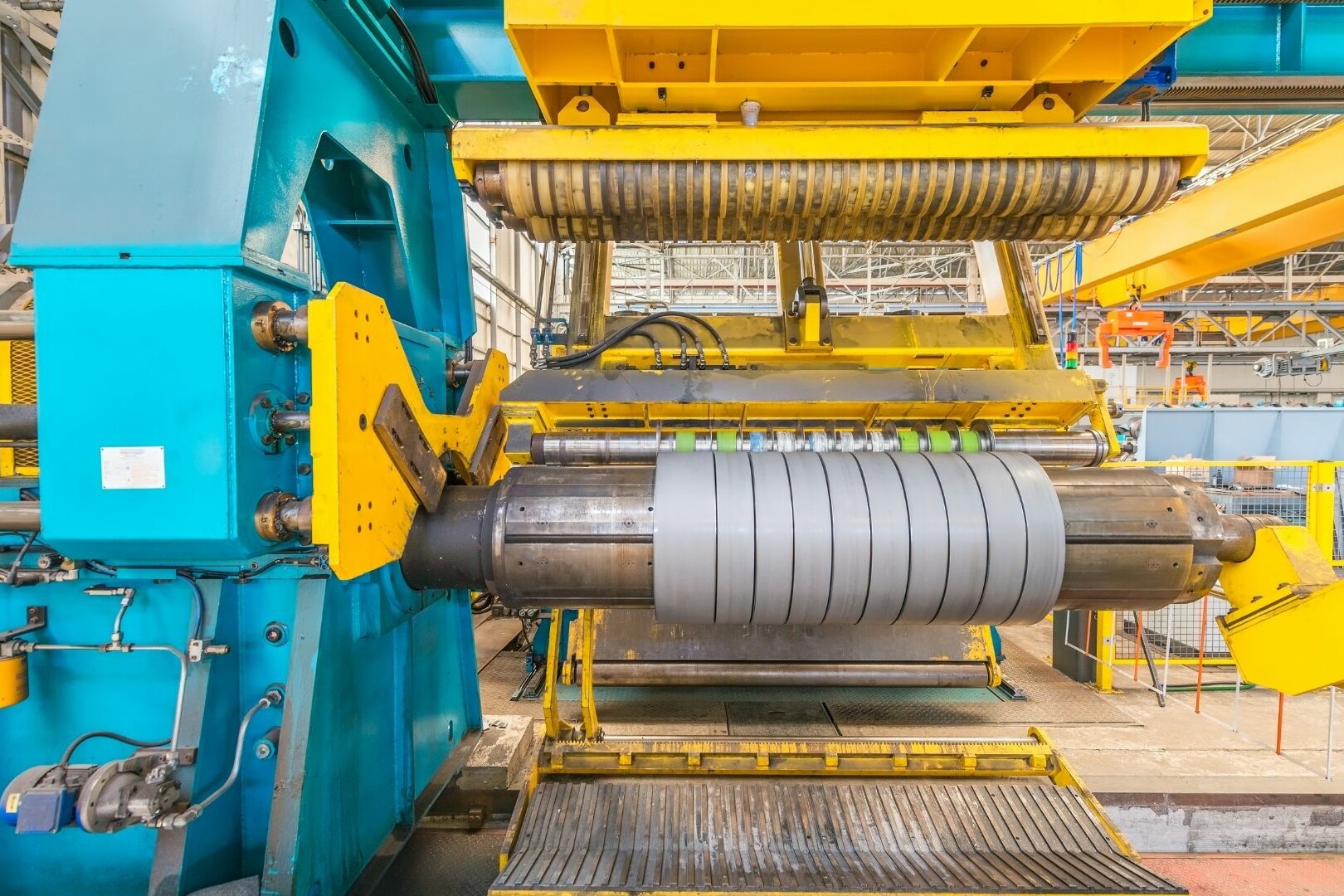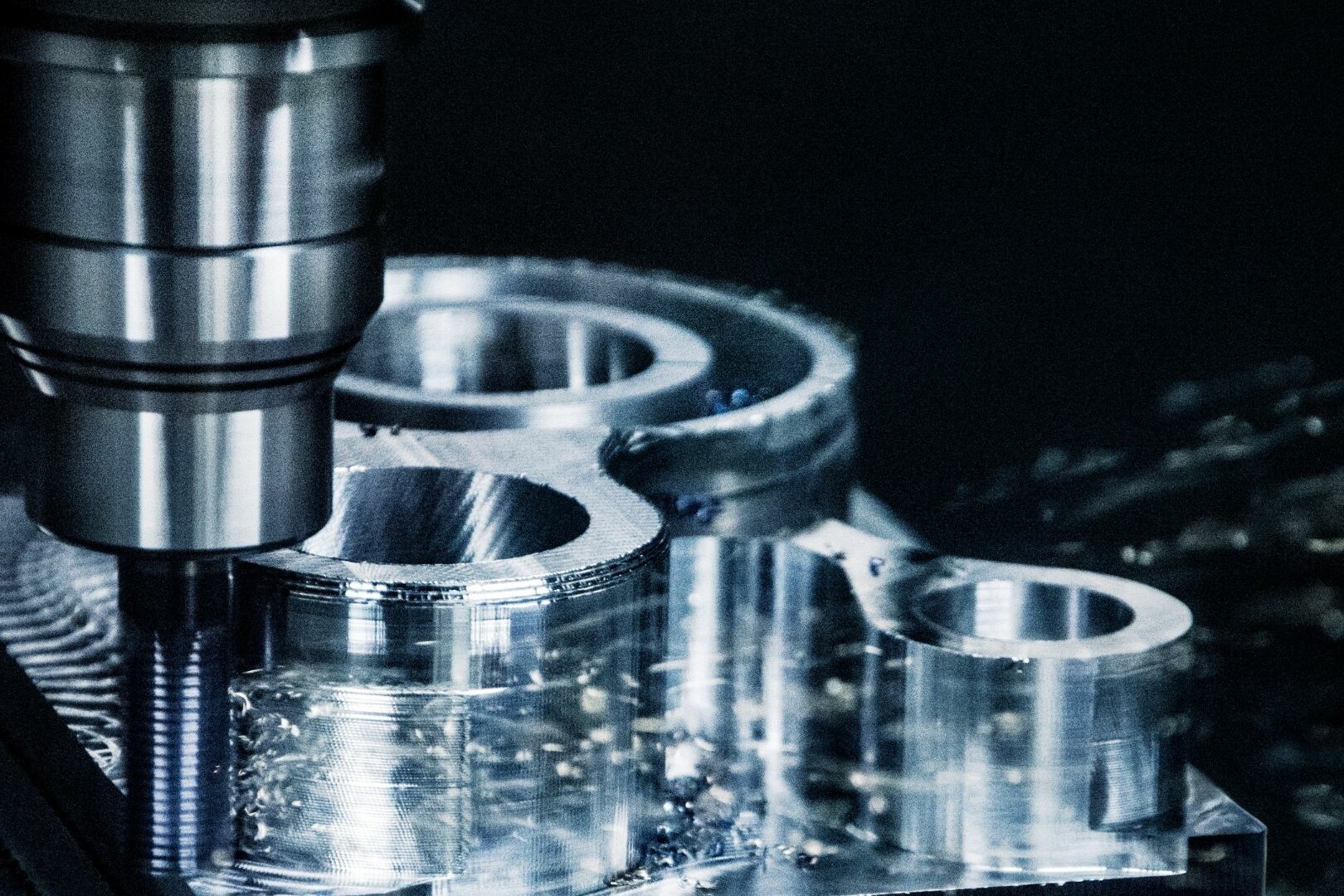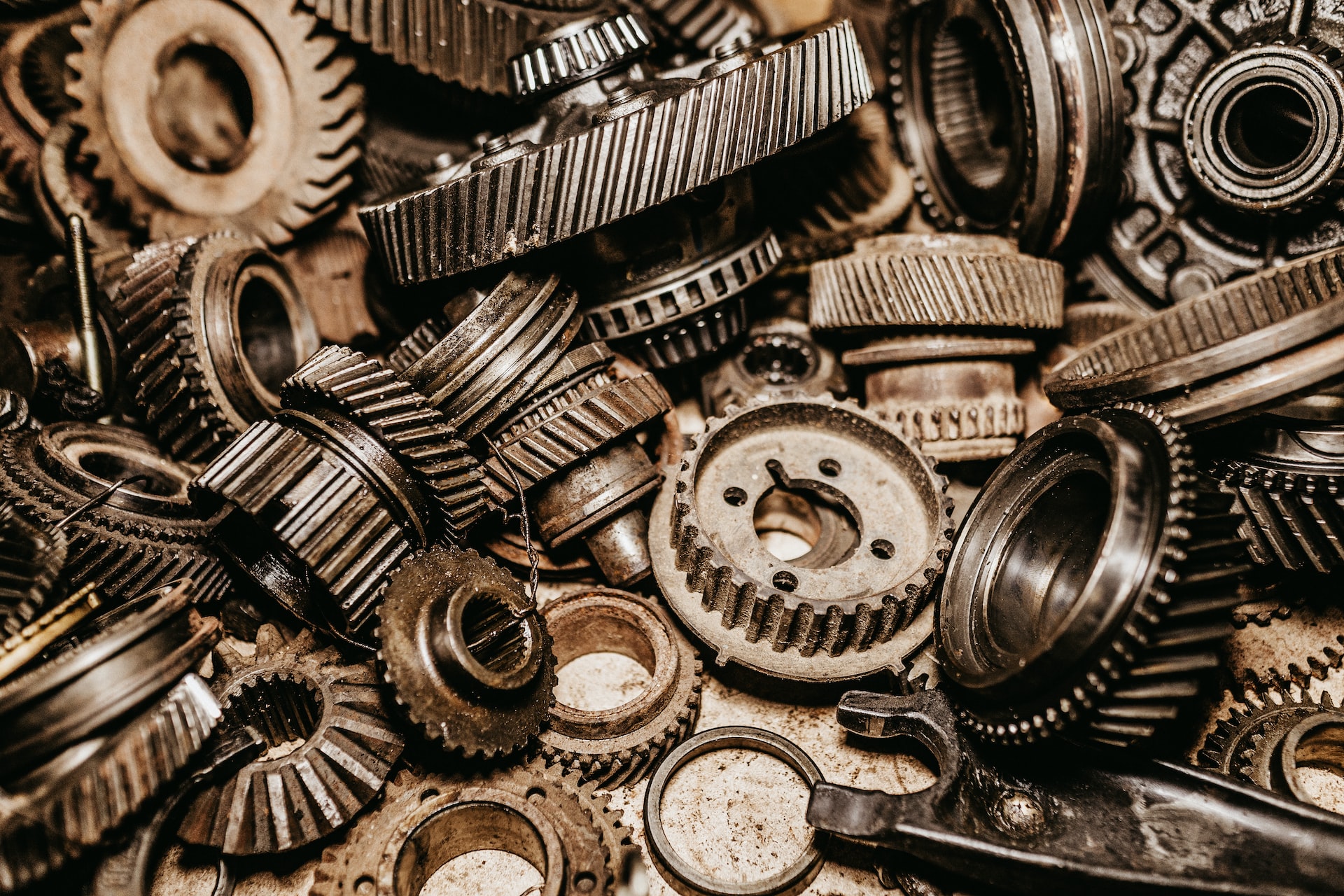The implementation of predictive maintenance strategies in the iron and steel industry has become a pivotal approach in ensuring the reliability and efficiency of operations. Leveraging advanced technologies, predictive maintenance has evolved into a sophisticated system designed to address the unique challenges posed by the industry’s heavy machinery and intricate processes.
Key Predictive Maintenance Technologies in Iron and Steel Industry
Vibration Analysis:
Vibration analysis stands out as a cornerstone technology in predictive maintenance for the iron and steel sector. By continuously monitoring the vibrational patterns of critical machinery such as rolling mills and blast furnaces, deviations from normal behavior can be detected. Unusual vibrations often precede equipment failures, enabling proactive intervention before catastrophic breakdowns occur.
Thermal Imaging:
Thermal imaging plays a crucial role in identifying anomalies in equipment temperature. In the iron and steel industry, where high temperatures are inherent, thermal imaging is employed to detect overheating or cooling inefficiencies. This technology aids in pinpointing potential failures in furnaces, ladle heating systems, and other heat-intensive processes, allowing for timely maintenance and preventing costly downtime.
Oil Analysis:
The health of lubricating oils in heavy machinery is a key indicator of equipment condition. Oil analysis involves monitoring the composition and properties of oils used in critical machinery, such as gears and bearings. Detecting changes in oil quality provides insights into wear and contamination levels, guiding maintenance teams in making informed decisions on lubricant replacement or machinery intervention.
Acoustic Monitoring:
Acoustic monitoring involves capturing and analyzing sound patterns emitted by machinery. In the iron and steel industry, where vast and complex processes are in constant operation, acoustic monitoring helps identify abnormal sounds that may signal impending failures. This technology is particularly effective in monitoring the condition of rotating equipment and detecting issues like misalignments or bearing defects.
Integration of Predictive Maintenance in Iron & Steel Processes
Real-time Monitoring of Critical Equipment:
Real-time monitoring is fundamental to the success of predictive maintenance in the iron and steel industry. Through the continuous collection and analysis of data from sensors embedded in machinery, operators gain immediate insights into the health and performance of critical equipment. This real-time awareness enables swift decision-making and the ability to intervene promptly to prevent unexpected breakdowns.
Condition-based Maintenance Scheduling:
Condition-based maintenance involves scheduling maintenance activities based on the actual condition of equipment rather than adhering to fixed time intervals. By utilizing data from predictive maintenance technologies, maintenance teams can optimize schedules, focusing efforts where they are most needed. This approach minimizes unnecessary downtime and maximizes the efficiency of maintenance resources.
Proactive Equipment Replacement Strategies:
Predictive maintenance enables the development of proactive equipment replacement strategies. By accurately predicting the remaining useful life of machinery components, organizations can plan and execute timely replacements, avoiding sudden failures that can disrupt production. This strategic approach enhances overall operational reliability and contributes to long-term cost savings.

Benefits of Predictive Maintenance in the Iron & Steel Industry
Predictive maintenance has emerged as a linchpin for achieving unparalleled advantages in the iron and steel industry, addressing the unique challenges posed by heavy machinery, high-temperature processes, and continuous production demands. The integration of predictive maintenance strategies brings about transformative benefits across various facets of operations.
Improved Equipment Reliability
Early Detection of Potential Failures:
In the iron and steel industry, where critical components such as rolling mills, blast furnaces, and ladle furnaces operate under extreme conditions, the early detection of potential failures is paramount. Predictive maintenance technologies, such as vibration analysis and thermal imaging, enable operators to identify subtle deviations in machinery behavior. This early warning system allows for proactive interventions, preventing catastrophic failures and preserving the reliability of equipment crucial to production processes.
Increased Equipment Lifespan:
The relentless nature of iron and steel production places significant stress on machinery components. Through predictive maintenance, organizations can optimize the lifespan of equipment by addressing wear and tear issues before they escalate. By employing condition-based maintenance scheduling, components can be replaced or refurbished at the right time, extending the overall lifespan of critical machinery and reducing the frequency of costly replacements.
Cost Savings
Reduced Maintenance Costs:
Unplanned maintenance events in the iron and steel industry can be prohibitively expensive, both in terms of labor and materials. Predictive maintenance strategies, by providing actionable insights into the condition of equipment, allow for planned and targeted maintenance activities. This proactive approach minimizes the need for reactive, emergency repairs, resulting in reduced overall maintenance costs and the efficient allocation of resources.
Minimized Downtime and Production Losses:
Downtime in iron and steel production translates directly to revenue losses. Predictive maintenance, by preventing unexpected equipment failures, significantly reduces unplanned downtime. Real-time monitoring of critical equipment and the implementation of proactive replacement strategies contribute to uninterrupted production processes. This, in turn, minimizes production losses and ensures a more consistent and efficient manufacturing workflow.
Enhanced Safety and Environmental Impact
Identification of Safety Risks:
The iron and steel industry’s commitment to safety is paramount, considering the inherent risks associated with heavy machinery and high-temperature processes. Predictive maintenance, with its focus on early detection, aids in identifying safety risks before they escalate. Whether it’s detecting potential failures in equipment that could compromise worker safety or uncovering issues with control systems, predictive maintenance contributes to creating a safer working environment.
Environmental Sustainability Through Optimized Processes:
Optimizing processes is not only about efficiency but also about environmental sustainability. Predictive maintenance ensures that equipment operates at peak efficiency, minimizing energy wastage and reducing the environmental impact of production. By preventing unnecessary breakdowns and optimizing resource usage, the iron and steel industry can align its operations with sustainable practices, meeting regulatory standards and contributing to a more environmentally conscious approach.

Case Study: Implementation of Predictive Maintenance in a Steel Mill
Background:
A leading steel mill, faced with challenges related to unplanned downtime and escalating maintenance costs, embarked on a journey to implement a comprehensive predictive maintenance program. The mill operated a range of critical machinery, including blast furnaces, rolling mills, and continuous casting machines.
Implementation:
The implementation involved the deployment of a predictive maintenance system that incorporated vibration analysis, thermal imaging, and real-time monitoring of critical equipment. Sensors were strategically placed on key components to continuously gather data, feeding into a centralized analytics platform.
Results:
Dramatic Reduction in Downtime: By detecting potential failures early, the steel mill experienced a significant reduction in unplanned downtime. The ability to intervene proactively allowed for scheduled maintenance activities, minimizing disruptions to production schedules.
Optimized Maintenance Costs: Predictive maintenance led to a shift from reactive to proactive maintenance practices. This resulted in a notable reduction in maintenance costs as resources were allocated more efficiently, and emergency repairs became the exception rather than the norm.
Extended Equipment Lifespan: The steel mill observed a tangible increase in the lifespan of critical equipment. By addressing wear and tear issues promptly, the need for premature replacements was minimized, contributing to long-term cost savings.
Predictive Maintenance for Specific Machinery
| Machinery Category | Predictive Maintenance Strategies |
| Heavy-duty Mining Equipment | – Vibration Analysis – Oil Analysis – Thermal Imaging |
| Blast Furnaces | – Thermal Imaging – Vibration Analysis – Acoustic Monitoring |
| Electric Arc Furnaces | – Acoustic Monitoring – Oil Analysis |
| Rolling Mills | – Vibration Analysis – Thermal Imaging |
| Continuous Casting Machines | – Vibration Analysis – Thermal Imaging |
| Heat Treatment Furnaces | – Thermal Imaging – Oil Analysis |
| Coating Lines and Surface Treatment Equipment | – Thermal Imaging – Acoustic Monitoring |
| Material Handling Conveyors | – Vibration Analysis – Infrared Thermography |
| Steel Cutting and Machining Centers | – Vibration Analysis – Oil Analysis |
| Hydraulic Presses | – Vibration Analysis – Acoustic Monitoring |
| Cooling Towers | – Vibration Analysis – Infrared Thermography |
| Power Distribution Systems | – Infrared Thermography – Electrical Signature Analysis |
| Welding Machines | – Vibration Analysis – Acoustic Monitoring |
| Industrial Robots | – Vibration Analysis – Oil Analysis |
| Water Treatment Systems | – Vibration Analysis – Infrared Thermography |
| Metal Forming Presses | – Vibration Analysis – Acoustic Monitoring |
| Crane Systems | – Vibration Analysis – Infrared Thermography |
| Industrial Pumps | – Vibration Analysis – Oil Analysis |
| Air Compressors | – Vibration Analysis – Infrared Thermography |
| Quality Control Inspection Systems | – Vibration Analysis – Acoustic Monitoring |
| Material Storage Silos | – Vibration Analysis – Infrared Thermography |
References:
- Kim, Jinsoo, et al. “Decarbonizing the Iron and Steel Industry: A Systematic Review of Sociotechnical Systems, Technological Innovations, and Policy Options.” Energy Research & Social Science, vol. 89, 2022, p. 102565., https://doi.org/10.1016/j.erss.2022.102565.
Recommended Blog Posts
September 4, 2023
Powerful Signal Analysis Tools for Vibration Analysis
Predictive maintenance, crucial for machinery reliability, heavily relies on vibration analysis. Techniques like FFT…
September 4, 2023
Rotating Machinery Vibration Analysis
Vibration analysis is a critical tool in various industries like manufacturing, power generation, and transportation.…
December 28, 2022
Fault Diagnostic Technique Using Machine Mode Similarity Analysis
AI can diagnose machine faults with vibration data but machine mode similarity analysis is an alternative, it uses…
September 15, 2022
Understanding Rotating Machinery Data
Machine data is generated by physical attributes and actions of machines, collected by sensors and analyzed for…
August 6, 2021
Envelope Analysis
Bearings are critical elements in rotating machines, they support radial and axial loads, and reduce friction. Real…
May 6, 2021
What is Cepstral Analysis?
Cepstral Analysis, a tool used to detect periodicity in frequency spectrum, can be useful in gearbox fault detection in…
October 9, 2020
How is Fault Detection Performed?
Vibration measurements and analysis, using multiple parameters, can identify developing problems in machinery before…
September 21, 2020
Parameter Selections in Vibration Measurement
Vibration measurements are used to determine the response of machines to forces and identify potential issues. It is…
September 4, 2020
What is Vibration Analysis?
Vibration analysis can be used to discover problems in machines and predict when they might fail. It can significantly…
Discover Our Products
Sensemore Predictive Maintenance Solution
If you enjoyed this blog, explore our Predictive Maintenance Solution page.











